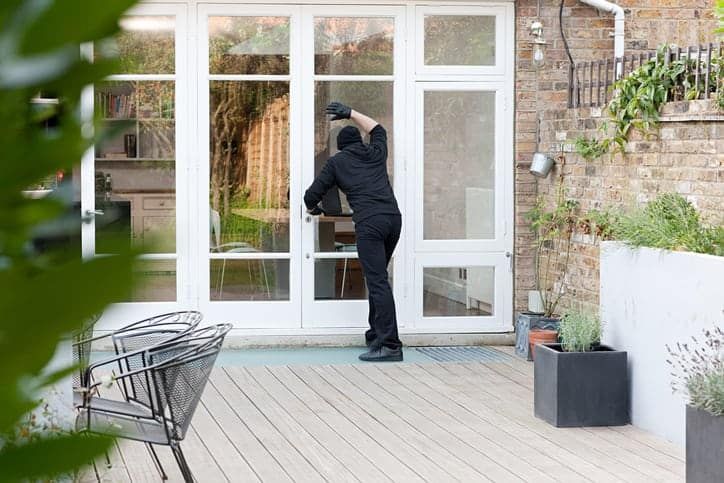
Burglar standing at patio door
It’s commonly assumed that a guard dog can help secure your home against intruders, but it’s becoming more common for pets themselves to be the target for thieves making an attempt to enter your home.
Figures collected by Blue Cross from police forces across the UK show 40% more pets were reported stolen in 2014 compared to 2012. During 2016, the BBC reported a 22% rise in dog theft across England and Wales; that’s around 5000 dogs stolen in the past three years, making them the most commonly stolen pets. Half of those were never recovered.
Why is pet theft rising?
In the past, pets of all types were stolen for their abilities: livestock-herding border collies, fighting pitbull mixes. These days, ‘posher’ pooches like Yorkshire Terriers, Pomeranians, Labradors and other pedigrees are stolen for resale. The average return on a stolen dog has been estimated at £200, with some pets ‘stolen to order’ selling online for over £2000.
Pet theft occurs for many reasons but it usually takes both the thief’s determination and the pet owner’s imprudence to allow it to happen.
How to secure your property against prevent pet theft
In case of the event you do experience pet theft, don’t neglect having your pet microchipped, or ensuring they wear an ID tag or collar that bears your contact details. Having your dog microchipped is now compulsory by law, and this will be the case for other animals in the near future. If your pet goes missing then it will give you a better chance of being reunited quickly as authorities, vets and rescue centres will be able to trace any found animal back to you. Keep up to date photos of your pet too, including any distinctive marks that can be used to identify them later.
Often, incidences of pet theft go unrecorded because owners choose to believe their pets are simply missing. Consider your loss, and determine whether it might be better to record it as a theft. If you think your pet has been stolen, report it to the police as soon as possible and obtain a crime reference number. If you chose to install CCTV in your home, it may assist the authorities in bringing those responsible to justice. You can also post your dog’s details and photographs to local noticeboards or websites, like the Dog Lost website doglost.co.uk.